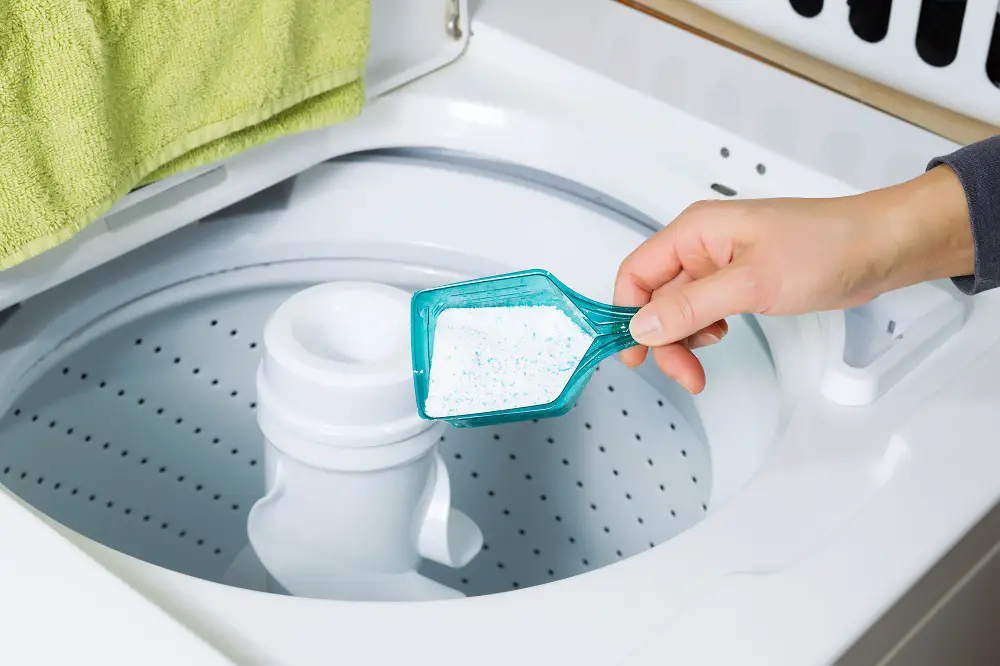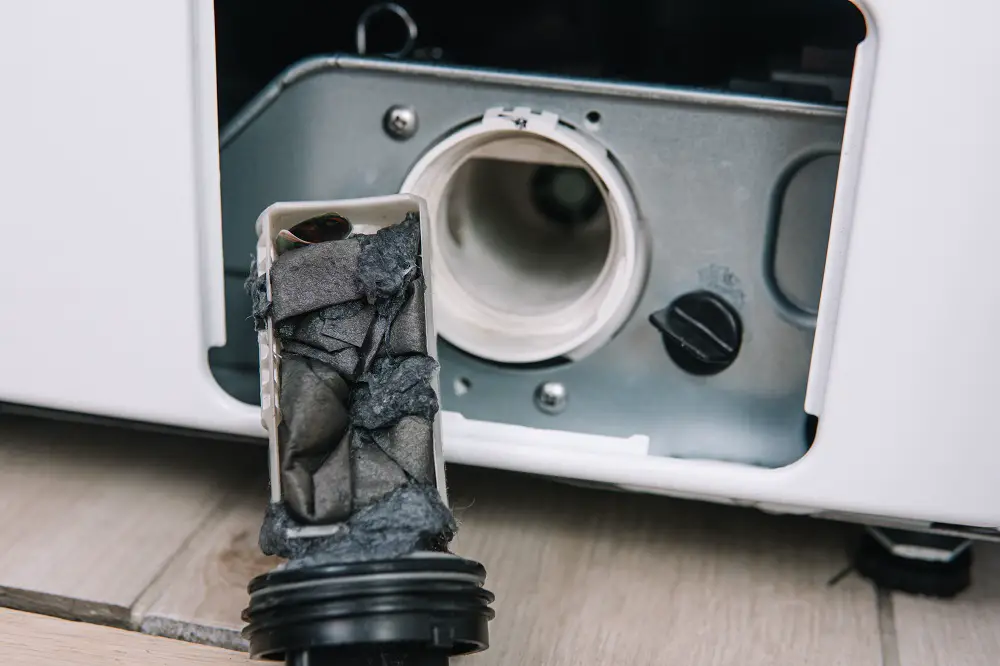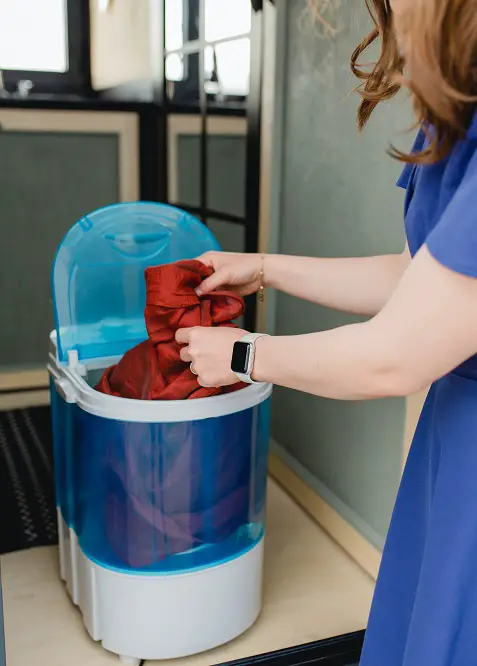With portable washing machines and portable dishwashers, homely chores have become convenient, especially for those with limited indoor space. A modern cleaning method uses ultrasonic waves to remove dirt from all kinds of surfaces.
But how does it work and are ultrasonic washers a good alternative for fabrics?
These portable machines use ultrasonic vibration cleaning, with ultrasonic energy and cavitation bubbles, for agitation and cleaning. It achieves cleaning at a microscopic level that other regular machines can’t.
You could use an ultrasonic cleaning machine for cleaning hard objects like jewelry, glasses, razors, and baby toys to remove dirt, slime, and grime. However, these aren’t very effective for any items from your laundry bag, like personal laundry, baby clothes, or any fabric.
It is ideal for travel, home, and a business trip and is an energy-saving and water-saving device for its special purpose.
Table of Contents
Ultrasound Explained (shortly)
Sound waves are changes in density in a medium (like metal, fluid, or gas). They are transmitted as vibrations of the molecules in the medium in a chain reaction movement. When the molecules vibrate, they can move up and down or back and forth, behaving like a wave.
The number of vibrations per second determines the frequency of the sound wave.
The human brain and ear can recognize sounds of frequencies in the range of 20 – 20,000 Hz (equivalent to 20 vibrations per second to 20,000 vibrations per second). Sound waves with frequencies above 20 kHz (20,000 Hz) are beyond the human ear’s audible limit and are called ultrasound.
Although human adults can’t hear ultrasound, the energy of ultrasound waves is present and useful in many ways.
The most common use is in ultrasonography, to be able to view inside the human body. Calculating the distance to underwater objects (Sonar) is another common use of ultrasound.
When ultrasound waves travel through water, they create bubbles through cavitation.
Principle of Ultrasonic Portable Washers
For ultrasonic cleaning, a fluid medium is necessary that can transmit the energy wave to the desired items. Once it hits the surface it will create small bubbles that implode and remove dirt particles on a microscopic level.
Before we look into how ultrasonic portable washers work, let’s look at the components that make one.
Components of an Ultrasonic Cleaning Machine
Of the limited yet, different machines available, some of the standard features include the following:
- Stainless steel or aluminum is used to construct such machines to make them durable and last longer.
- Most cleaners come with a tank of different capacities (to fill the required cleaning solvent). However, some are without tanks and must be used in a bowl, sink, or washing bucket (like the Sonic soak).
- A rack or basket where you can place your items that need cleaning help to prevent scratches or any etching during the cleaning process.
- Piezoceramic transducers are found at the side or bottom of the tank.
- All models usually have an on/off switch, with some even having automatic shut off.
- Some models feature temperature controllers and timers.
- Another feature that isn’t common to all ultrasonic machines is a drainer that drains the solution after cleaning.
- Some models have different operating modes like sweep modes (slight frequency fluctuation) and pulse modes (boosted ultrasonic power).
Principle of Operation
If you don’t have a portable ultrasonic cleaning machine with a tank, you’ll need to use a suitable bucket or similar set-up. Some models come with a powerful suction cup to stay put while operating.
Once the ultrasonic device is plugged in and switched on, the transducer converts electrical energy into ultrasonic energy. The high-frequency compression sound waves create microscopic (cavitation) bubbles that quickly grow in size until they collapse inwards or explode.
Ultrasonic cavitation is when tiny bubbles or voids made of gas, like water vapor, form in a liquid owing to the rapid pressure decrease. The sound waves cause any microscopic bubbles in the liquid to expand in the low-pressure phase. The voids then instantaneously implode by the rapid pressure increase.
An ultrasonic cleaner performs bubbling cleaning; the implosion of these bubbles creates a wave of pressure and removes the tiniest of dirt particles from the objects placed for cleaning. Most ultrasonic cleaning machines operate at 50 – 100 Watts per gallon.
Frequency of operation
While ultrasonic ranges between 20 kHz – 100 kHz, most ultrasonic cleaners operate using 40 – 60 kHz.
Smaller bubbles are produced at higher frequencies for more gentle and detailed cleaning.
However, lower frequencies create bigger bubbles for more intense, aggressive cleaning.
Type of Ultrasonic Cleaners
Apart from the heavy-duty industrial type of ultrasonic cleaning machines, the ones suitable for regular use are:
Lab Size / Tabletop Cleaners
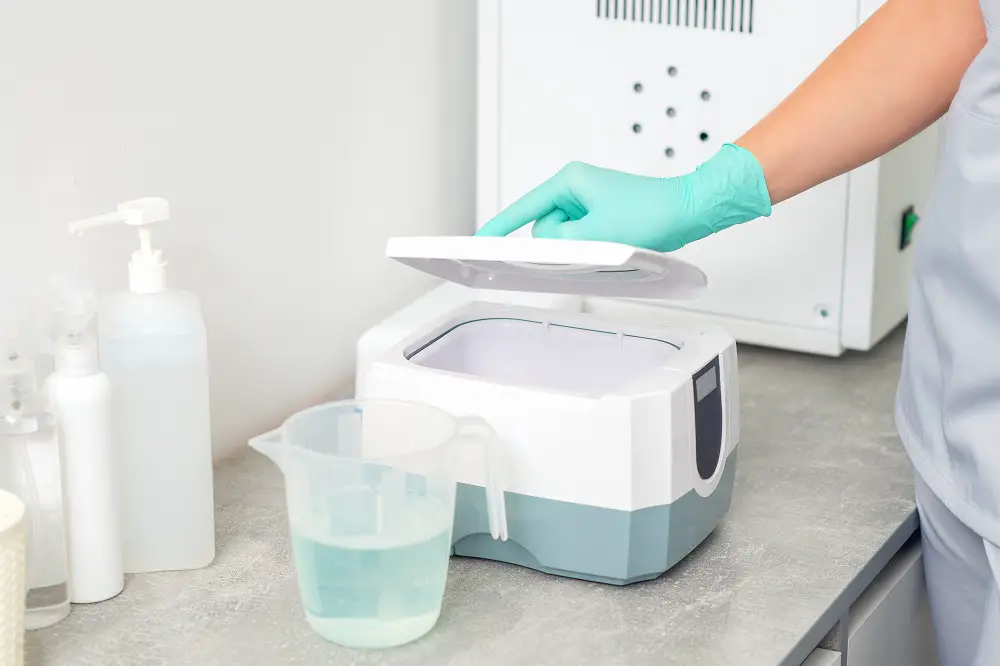
Unlike heavy-duty industrial cleaners, these types of cleaners take up less space and efficiently clean small objects (even glass items). The generators are integrated into the same case as the tank, and despite having heavy transducers, they aren’t rated for operating 24/7.
Small Systems
Ideally, these portable machines have small transducers and simple generators and are meant for light-duty cleaning. Meant for use in homes or small business settings, they can be used like a mini washing machine for clothes (not 100% effective, though) or to clean fruits, vegetables, meats, jewelry, baby toys, and even glasses.
Are Ultrasonic Washers Effective?
Ultrasonic washers aren’t effective in washing clothes since fabrics are good absorbers of sound, including ultrasonic energy. The cavitation effect can’t reach all parts of the laundry unless presented in a flat layer, which isn’t a practical approach.
Despite the availability of some mini ultrasonic washing machines, none seem to be effective in achieving cleaning like a regular portable washing machine.
The laundry power of ultrasonic washers isn’t very effective because fabrics absorb ultrasonic energy and aren’t flat.
It would get costly to create sufficient ultrasonic energy to overcome the damping effect.
Or, garments would need to be washed one flat layer at a time – not very practical.
Since ultrasound works effectively in cleaning hard surfaces, and since fabrics are flexible, it doesn’t work very well to get your clothes clean.
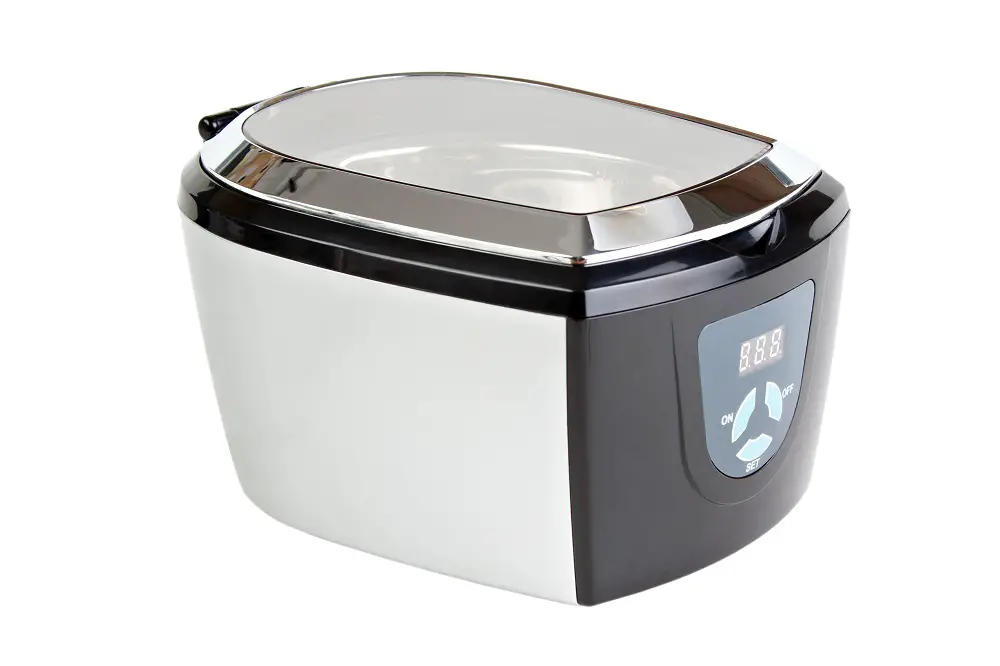
When To Buy A Portable Ultrasonic Washer?
Portable ultrasonic washers work great for cleaning small, hard objects and getting dirt or stains out of even the tiniest crevices.
It would’ve been great to have a portable ultrasonic washer to wash clothes, especially for those living in tiny houses with no space for a top or front-load machine. However, currently, there is no such ultrasonic machine that could replace a washer.
A portable ultrasonic washer is a good investment if you’d like to get some small, hard objects like jewelry, glasses, baby toys, watches, produce, etc., thoroughly cleaned. A little bit of dish soap in some hot water, and you have a mini dishwasher that washes off the most stubborn stains on dishes.
Recommended Portable Washer With Ultrasound
If you’re looking for a good portable ultrasonic machine for cleaning small objects, the Creworks ultrasonic cleaner is a good pick. The Sonic soak works well if you’re looking for something smaller that you could use in a small tub, sink, or bucket.
Creworks Ultrasonic Cleaner

This ultrasonic cleaner works well to sanitize small items and any valuables. Operating at 40 kHz ultrasonic frequency, with 180 W cleaning power, 200 W heating power, and a 1.6-gallon tank capacity, it provides rust removal, advanced cavitation, and more.
There are options to pre-set cleaning time between 1 – 30 minutes and choose the temperature between 40 – 60 degrees Celsius (104 – 140 degrees Fahrenheit). It cleans glasses, watches, jewelry, dentures, retainers, gun parts, and razors effectively.
An LCD display and touch button controls make it user-friendly. It also has a dual-fuse protection system to prevent burn-outs.
Sonic Soak
With over 50,000 ultrasonic vibrations per second, this portable ultrasonic washer has the efficiency of industrial ultrasonic cleaners while being convenient enough to fit into a bag or even the palm of your hand.
It uses microscopic cavitation bubbles to destroy dirt particles, bacteria, and germs. Sonic Soak can effectively clean anything that you can fit into a water container. This includes kitchenware, baby products, toys, fruits and vegetables, personal care and accessories, jewelry, watches, glasses, and delicate items.
Conclusion
Ultrasonic cleaning machines can effectively clean hard, flat objects like jewelry, glasses, baby toys, watches, etc., that you can’t manage to get cleaned manually. However, these portable machines can’t replace washing machines as they aren’t effective for laundry.
Since ultrasonic works best against hard surfaces, you could stretch the fabric over a hard surface in a single layer to increase its ability to attract cavitation bubble implosions.
This is especially helpful in removing any stains from single fabrics since only the stained portion can be exposed on a hard surface, as opposed to a wave hitting a loose shirt, which will deform and absorb the energy.
Sources:
Title Image: Hannes Grobe, CC BY 3.0 https://creativecommons.org/licenses/by/3.0, via Wikimedia Commons
